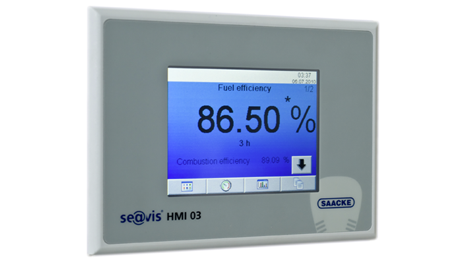SAACKE control optimization

The main points:
- Possible for each plant, burner, and control circuit
- Competent analysis, even for complex systems
- Individual, selective optimization of individual control systems or entire plants
- Allows for smooth, problem-free control response
- Extended service life of burner, boiler and peripherals
- Fuel savings of up to 10% possible
Optimized control response, longer service life and reduced fuel consumption
The control system of a firing plant makes up only a small and inconspicuous part of the entire plant. Yet it continually plays a central role and almost always conceals an underestimated potential for optimization.
Regardless of how they are designed, controllers record pressures, temperatures and water levels. They monitor speeds, flow rate or the conductivity of the boiler water while simultaneously driving actuators to maintain the specified limits. They switch the burner on and off, monitor blow-out quantity or start the feed water pumps if the boiler water level falls below a defined limit value.
Depending on the response of the relevant control circuits, the controllers must be configured individually: Thus a small boiler with a large firing capacity naturally responds faster to a burner start than a large boiler with a small firing capacity. The control characteristics must therefore be adapted individually to ensure that sufficient heat is always delivered at each point in time, even if the heat demand fluctuates. The same applies for every type of control circuit: A good control system operates the actuators at the right time and keeps the actual value close to the setpoint.
On the other hand, unfavorably adjusted controllers respond too late, too strongly or too slowly. Control circuits of this type may oscillate or not reach setpoints. They continue blow-out for too long, restart the burner too frequently, run the fan at high speed or are unable to maintain temperature or pressure levels. All of this not only has a detrimental effect on control response, it also wastes considerable amounts of fuel and electrical energy and shortens the service life of the plant.
Because of their central role, even invisible control circuits are the focus of commissioning, repair and service for SAACKE. After a comprehensive analysis of the system and operating behaviour, SAACKE service technicians optimize each individual control circuit, regardless of whether they have two-point controllers, PID compact controllers or a complex PLC. In this way SAACKE ensures that plants run more reliably worldwide, have longer service lives and, as a side effect, require up to 10% less fuel. The impact on the budget will be anything but inconspicuous!